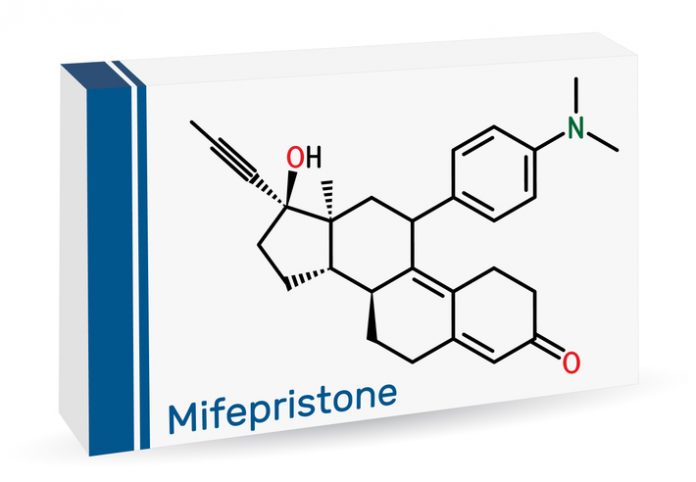The future of chemical abortion is in the hands of the U.S. Supreme Court after federal courts in two separate cases gave conflicting rulings about the legality of mifepristone.
Mifepristone is the first of two drugs used to induce a chemical abortion during the first few weeks of pregnancy. Chemical abortions make up more than half of all abortions in the United States, according to the Guttmacher Institute.
Chemical abortifacients have become a focal point of litigation after the Supreme Court ruled there is no constitutional right to abortion.
Divided Court Views
The U.S. Food and Drug Administration (FDA) overstepped its authority in 2000 when it approved mifepristone, U.S. District Court Judge Matthew J. Kacsmaryk of the Northern District of Texas ruled on April 7.
Kacsmaryk suspended the drug’s approval while the lawsuit proceeds. The Alliance for Hippocratic Medicine, a group of pro-life medical associations, filed the complaint last year.
Less than an hour later, U.S. District Court Judge Thomas O. Rice of the Eastern District of Washington ordered the FDA not to interfere with the availability of the abortifacient in the states involved in the lawsuit.
The Biden Administration quickly appealed the Texas decision to the U.S. Court of Appeals for the 5th Circuit, which stayed Kacsmaryk’s preliminary injunction, but upheld parts of his ruling. Without invalidating mifepristone’s approval, the 5th Circuit ruling rolled back some guidelines the FDA has changed over the past two decades.
Restoring Restrictions
The FDA has periodically loosened restrictions on mifepristone—most recently during the pandemic, when it allowed doctors to prescribe the abortion pill without seeing a patient in person.
The 5th Circuit’s ruling disallowed that practice and also prohibited sending mifepristone through the mail, which the FDA authorized in 2021.
However, one week after Kacsmaryk’s ruling, the U.S. Justice Department and Danco Laboratories, which manufactures mifepristone, applied for and were granted emergency relief from the 5th Circuit ruling. Supreme Court Justice Samuel Alito granted the administrative stay as the Supreme Court considers whether to intervene. The stay was granted until April 21, as of this writing.
FDA Tainted by Politics
From the start, the FDA has made decisions about mifepristone that went way beyond its scope, says Katie Daniel, an attorney and state policy director at Susan B. Anthony Pro-Life America.
“This is completely political; it’s not science or data-driven at all, and that’s really the crux of this lawsuit,” said Daniel. “Bill Clinton came into office and said, ‘a goal of my administration is to put this drug on the U.S. market,’ and he got it done on the way out the door.”
In his ruling, Judge Kacsmaryk noted President Clinton’s pressure on a French pharmaceutical company to get mifepristone into the U.S. market.
‘They Don’t Want To Know’
The FDA uses flawed reasoning to justify its rules, such as removing complication reporting requirements, says Daniel.
“The reasoning is that they don’t want to know,” said Daniel. “They stopped collecting data about complications and then said, ‘Look, there are no complications; no one’s telling us about them.’ They know how many root canals have happened, but not how many abortions.”
To get the original approval, the FDA “reclassified a normal pregnancy into a life-threatening illness,” said Daniel.
The FDA also dodged the Pediatric Research Equity Act, which requires a drug to be studied on minors before it is approved for that population, says Daniel.
“The FDA issued itself a waiver from the requirements of that law,” said Daniel. “It approved the drugs at the same dosage for a 15-year-old going through puberty as a fully grown adult woman.”
Promoting Big Pharma
The FDA has cut corners for mifepristone, David Gortler, Pharm.D., a scholar at the Ethics and Public Policy Center and former senior advisor to the FDA commissioner, wrote in an article published by the Brownstone Institute, on March 25.
“The FDA is now not just approving—but promoting—Big Pharma’s proposal to permit mailed, at-home use of mifepristone for ‘do-it-yourself’ abortion,” wrote Gortler. “No more doctor or staff present. No more ultrasounds to confirm gestational age or any in-house monitoring for internal bleeding—for a drug well known to cause life-threatening bleeding.”
Regarding what will happen next, Gortler told Health Care News, “What the FDA did is total malpractice. Nobody cares anymore, and I have no faith the right thing will occur.”
Harry Painter (harry@harrypainter.com) writes from Oklahoma.
For related articles, click here.
This article was updated on April 21, 2023, to reflect the U.S. Supreme Court’s decision to uphold stay.





















